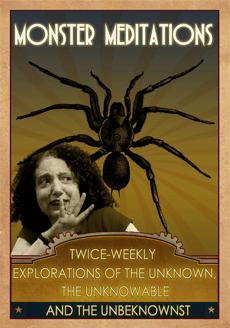Some words have weight — they add gravitas to dialog and descriptive text. Other words are shrill or hushed or pound a fist on a table with emphatic power.
The other day I was trying to write a scene in a novel involving dancing. You’d think this would be very easy for me. I go out Tango dancing a few times a week, take at least one Zumba class a week, have been known to show up at a Swing dance and I’m always looking for a good belly dancing class — but writing about dancing is something else.
I’m not the character and the character is not me. Writing about her first experience with the Tango means putting myself in her shoes — her shoes not made for Tango — and writing about her sensual and sensory experience of the dance. This naturally got me thinking about Tango lessons (not the film ‘The Tango Lesson’) and how different instructors have used words to convey with sensory experiences.
One of my favorite tango teachers once challenged me to dance different textures. She proposed that I could alter the feeling I communicated to my partner by dancing FUR, SILK, etc.…. Altering my presence in the embrace to reflect these entirely different textures as part of my interpretation of the music. Fur and silk were easy. In one I was cuddly and soft, the other I was smooth and cool. I tried taffeta and that was great too. I was crisp and precise in my movements, but light and happy to move, move, move with the music.
Words convey textures and in storytelling. I want to try to access this bag of verbal tricks to bring the reader inside the experience I’m describing. So, as I ponder the dancing scenes in the book, I’m thinking about the textures of the character’s feelings and her impressions. To dance Tango well, you must be grounded and yet ready to move. The words create a contraction — a tension — between weight and flight, but tension turns any dancer into a statue (made of wood or granite). Smooth polished granite and roughly hewn wood (wonderful textures) make terrible dancers, but add wonderful texture to text.
Maybe I succeed in finding the right words to describe this bright spot in a tale about terrible deeds and monstrous people? My efforts will likely it some rough patches, but in the end it will be smooth.





We can put sight, sound and feeling into words. But this makes me wonder how we might convey taste. Would be an interesting experiment to bring the reader to flavor without referencing similar food profiles and such.
One of the most fascinating things about TASTE is that what I might perceive as a raspberry taste in a fruity wine, you might call black cherry. I took a wine tasting class a while back and the teacher joked that when you’re tasting a white wine and are at a loss for words say it tastes like apples — but be specific, i.e. Granny Smiths or Goldens — and you will sound intelligent and everyone will agree.
Now, you’ve got me thinking about those taste sensation words and how I can use them. I bet you have a boatload of beer-y words!
The worst beer words in the past few years are ones that come reminiscent of different foods (like this beer has a cremesickle quality to it).
Taste memory is a weird range to explore. We always end up comparing the flavor to a flavor we are familiar with (which is why everything tastes like chicken).
Oh my, I’d RUN screaming from a creamsicle beer!
I don’t know what cremesickle taste is but it doesn’t sound inviting. Having read your work I doubt very much you’ll have a problem conveying meanings across to your reader. Conveying tastes is another matter altogether unless you start with smoky since everyone knows bbq flavours.
xxx Hugs xxx
There are parts of the U.S. where they argue about the right wood for the smoke, the right cuts, the right timing…. LOL subjectivity & taste!
Descriptive writing has never been my forte so I can’t contribute much, especially to tango dancing which I know not at all. But dancing of any kind is sensuous so I think I’d be able to follow the description of the dance if it related to feelings I do recognize?
You are right on target!
As for my novel, it’s early days in the draft and early days with the protagonist and her dance experience. So far, she feels overwhelmed and confused — no drums pounding out a beat, none of the familiar sense memory of sensations of dancing a mambo. Lots of work to do on that pivotal scene… LOTS!